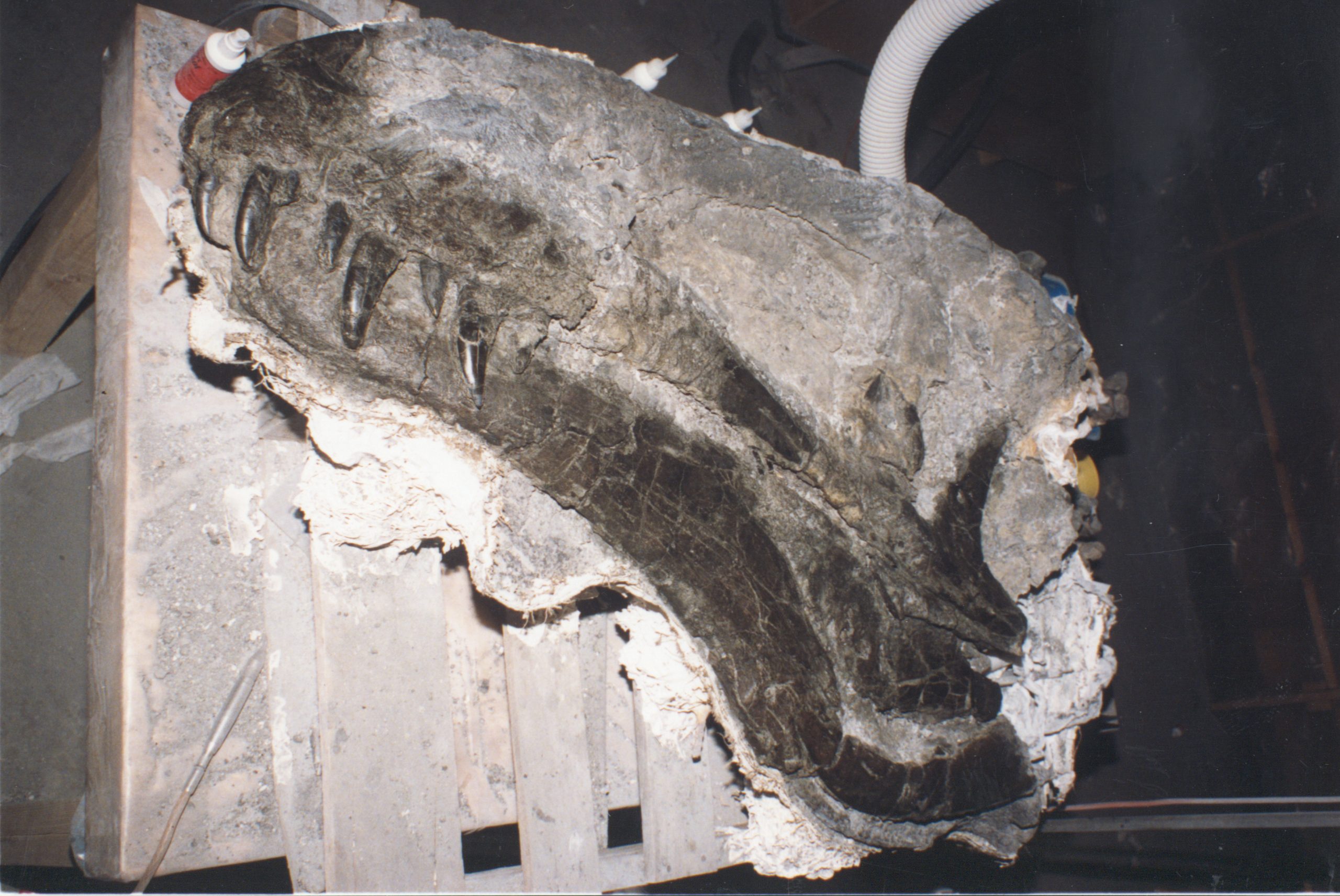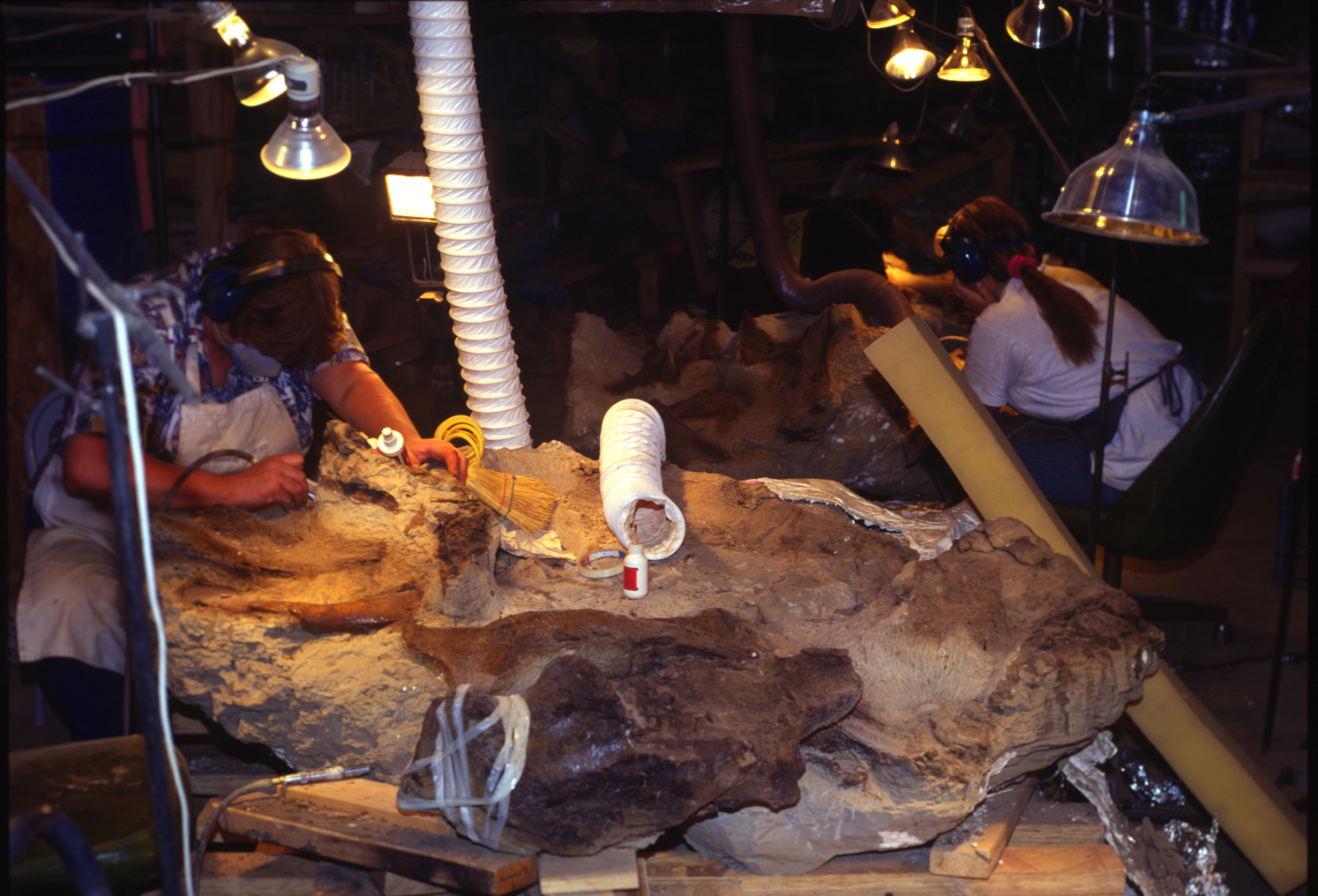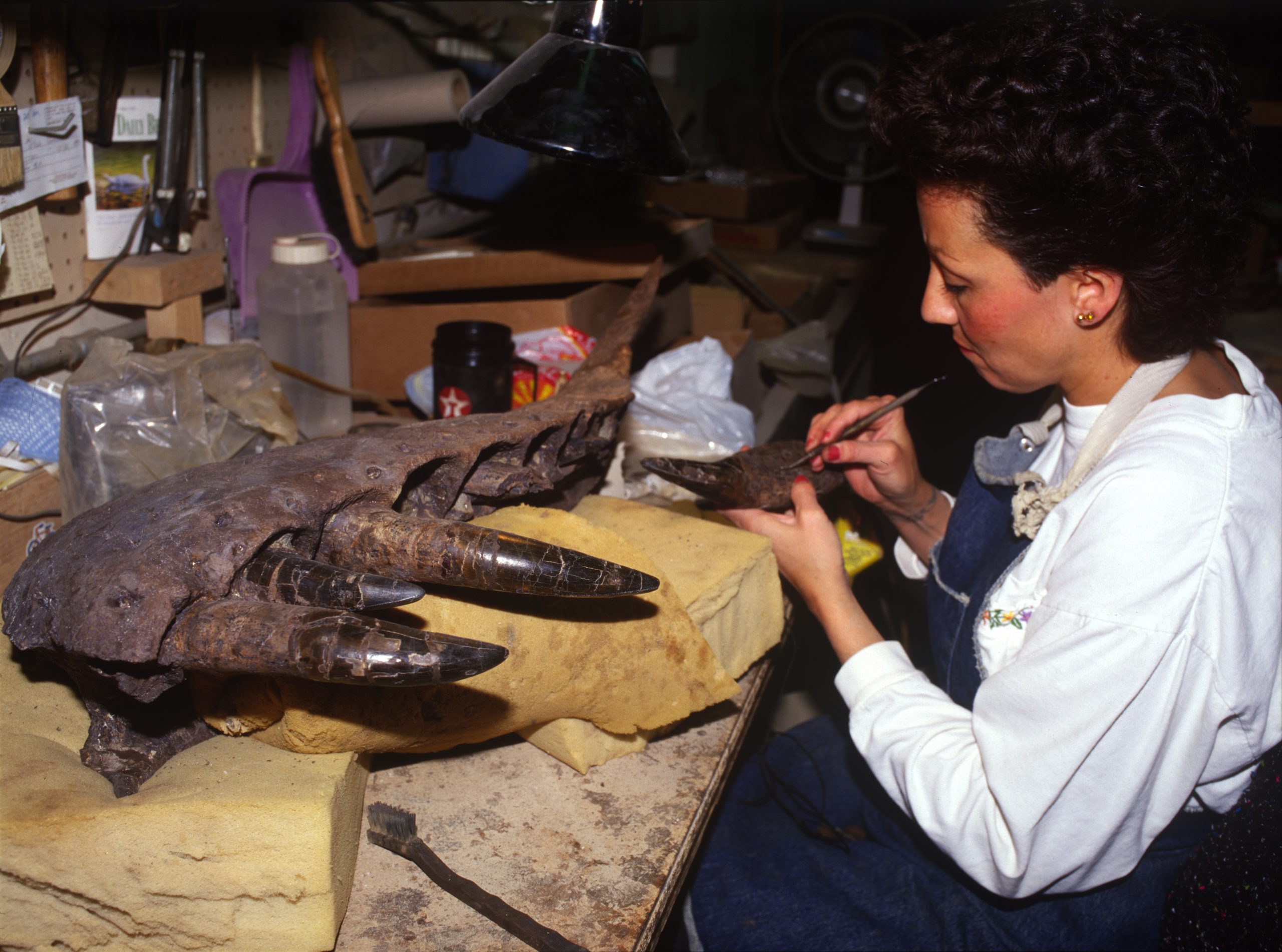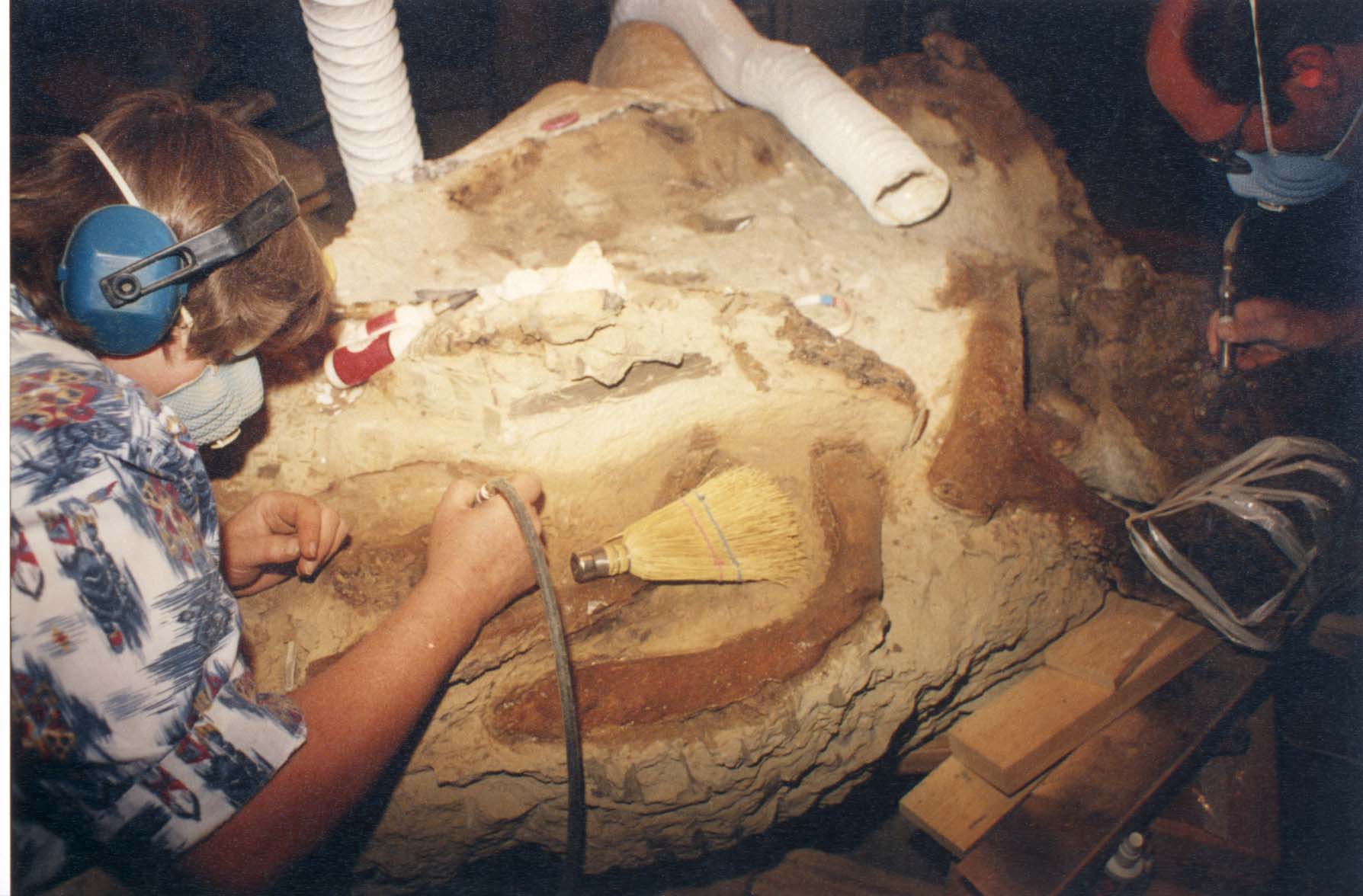Favorite CollLection Triceratops Real Figure Keyring
$11.95

Without a doubt, Black Hills Institute of Geological Research is known worldwide for the finest fossil preparation that has ever been done. It is our understanding of the fossil and its matrix, our many years of experience, our innovative techniques, and the use and knowledge of the appropriate tools and equipment that helps make the Institute the preparation leader in the paleontological world. Often the details uncovered by our preparators give exciting clues to the life and death of the animal.


Institute preparators use a variety of tools in preparation. Much of the work is still done manually using chisels, hammers, X-acto® knives, and scribes along with various types and sizes of brushes and small hand tools. However, most of the fine detail work of removing the matrix from the fossil is done with the use of air scribes and air abrasive units. The Institute has been using Comco® air-abrasive machines (airbrades) in their laboratories for over 20 years. This equipment has performed consistently well and most repairs can usually be completed in just a few minutes. Black Hills Institute often prepares small and delicate fossils under a microscope or a magnifying glass. This ensures that no details are missed or destroyed.
It is necessary to continue the stabilization process during all phases of preparation. Our staff uses several different viscosities of cyanoacrylates (Starbond™ adhesives) and PVA (polyvinyl acetate) for this purpose. After nearly 25 years of use, the Institute is convinced that cyanoacrylate glues have the best strength and are the longest lasting of any glues available for fossil preparation. PVA is also used in conjunction with these glues by our technicians for stabilization and as a final finish (sealant) on most fossils.
At times, fossil bones that have been crushed under the weight of the sediments in which they are buried, must be taken apart to restore them to their original shape. The airbrade and diamond tools are used for this purpose. Occasionally fossil bones contain unstable pyrite which must be removed as completely as possible before the fossil is ready for display. Our preparators have worked on many fossils that contain unstable pyrite. The Institute uses sodium bicarbonate in the airbrade and other tools to remove the pyrite. Bones are then soaked with Starbond™ penetrant and a final sealing coat of PVA. Ten years after receiving this treatment, these fossils show no additional deterioration.

Nearly all fossils, whether vertebrate or invertebrate, are missing portions when collected. Often, fossils are very incomplete – entire bones may be missing from a skeleton or skull. It is because of this that the Institute has perfected the art of fossil restoration. The missing portion can be sculpted from water putty, epoxy putty, glues, plastics, or any other medium that can be shaped, formed, carved, or cast. The decision as to what material to use is determined by how large a portion must be restored and the type of fossil being prepared. In preparing a complete skeleton or skull, a bone that is missing completely will often be replaced by a cast bone from another specimen of similar size. Sometimes, a missing piece must be sculpted using available illustrations and photographs of another specimen. Smaller areas of restoration are usually accomplished with epoxy putty or glue.
The determination of what is restored can usually be seen by shining a black light on the fossil. Since restoration does not fluoresce and the fossil does, it is then possible to see what has been restored.